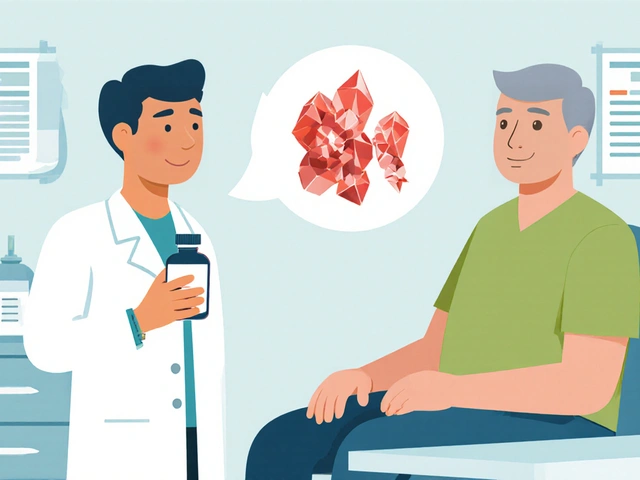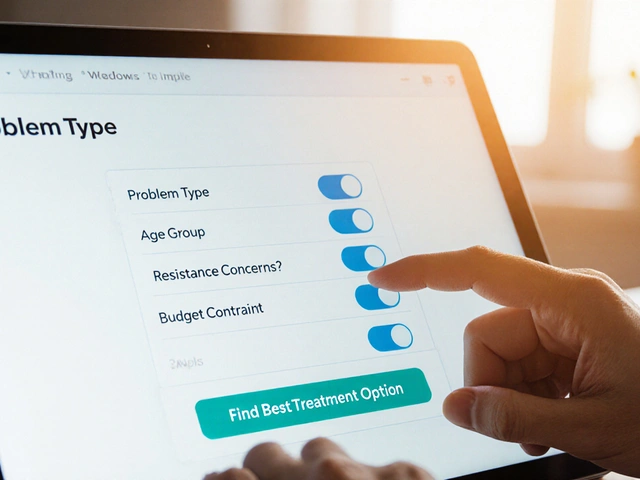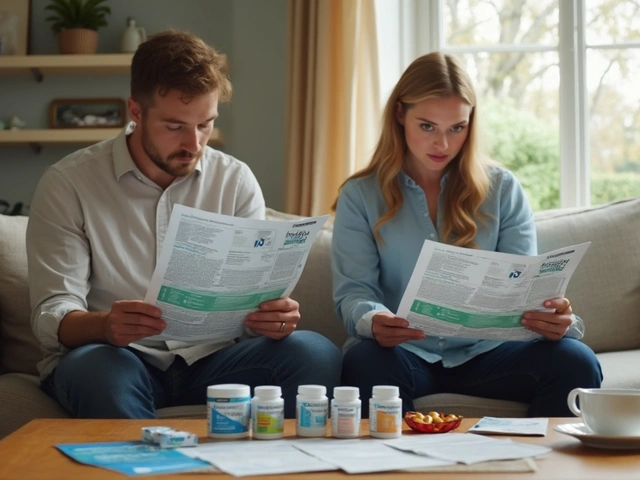
Understanding Clindamycin Phosphate
So, we're diving into the world of antibiotics, specifically clindamycin phosphate. It's like a superhero in the medical realm, swooping in to tackle those pesky bacteria that have a knack for making kids feel less than stellar. Imagine bacteria as tiny invaders and clindamycin as the secret agent deployed to save the day. It has a particular talent for fighting off certain kinds of bacteria that are responsible for causing infections in various parts of the body – we're talking about the skin, the lungs, and even the blood. You might have guessed it's not your average over-the-counter remedy. Nope! It's a prescription-only medication that packs a punch, available in various forms including topical solutions, gels, and lotions for skin infections, as well as oral capsules and injections for more serious body-wide infections.
Its mechanism? Quite the covert operation. Clindamycin interferes with the bacteria’s ability to make proteins – essential for their survival. Without these proteins, the bacteria can't grow, replicate, or repair themselves which leads to their ultimate downfall. Viola, they're defeated, and the infection starts to clear up. It’s like taking the batteries out of the bad guy’s gadgets – without power, they’re just not that threatening. For those concerned about the scientific aspect, clindamycin falls into a category of medications known as lincosamide antibiotics. Fancy term, yes, but simply put, it's all about the strategic way clindamycin disables the bad bacteria.
Now, do remember that antibiotics, as fantastic as they are, have their limitations. They're not like your all-purpose cleaning agent that you use to wipe down everything from counters to car seats. Nope, clindamycin isn't going to do much against viruses, like the common cold or flu. It's a bacteria buster, not a virus vanquisher. So why focus on this particular medicine, you wonder? Well, because when used correctly, it can be an incredibly effective tool in our health arsenal – especially for the little ones who seem to bring home new germs as often as they do art projects from school.
Clindamycin Phosphate: When is it Prescribed for Children?
Kids: they're adorable, they're funny, and they have this remarkable talent for getting into all sorts of infectious mischief. When it comes to our pint-sized patients, doctors pull out clindamycin phosphate when they have certain types of bacterial infections that need the big guns to be handled appropriately. Think of it as calling in a specialized guard to protect a royal treasure – which, in this case, is your child’s health.
For instance, it may be prescribed for middle ear infections, also known quaintly as otitis media. That infection that has your kiddo tugging at their ear like they're trying to solve a puzzle by pulling on the pieces – clindamycin might be the answer. It's also used to treat more serious infections like pneumonia, a formidable opponent that takes up residence in the lungs and turns every breath into a labor. Then there are skin and soft tissue infections, when your little one comes home with a scrape that decides to become a science project, sprouting all sorts of bacteria. Not to forget bone and joint infections – because yes, somehow, bacteria find their way there too!
And since we're touring the infection map here, let's not forget about bacterial blood infections (sepsis) that can get serious faster than a toddler can spot a cookie on the counter. Even certain cases of strep throat, where your child suddenly sounds like they've taken up a temporary career as a hoarse pirate, may call for clindamycin. So, in short, it's that antibiotic that doctors pose a great deal of confidence in when they come across stubborn bacterial infections in children that don't respond to other, more commonly used antibiotics.
Safe Dosage: Key to the Clindamycin Treasure Chest
Determining the right amount of clindamycin for a child is like deciding how much ice cream is too much at a kid's birthday party – it's a delicate balance! You want enough to combat the infection effectively but not so much that it leads to problems. The magic number for dosage depends on the child's weight, the severity of the infection, and the form of clindamycin being used.
The motto here is "measure twice, medicate once." It's crucial that the dosage is calculated specifically for each child because a one-size-fits-all approach just doesn't cut it in the world of pediatrics. Docs pull out their calculators and consider every variable before committing to a number. They typically start with a lower dose to see how the child responds and might adjust as needed. It's akin to trying to find the perfect volume on your music player - not too loud to disturb the neighbors but loud enough to enjoy the melody.
For oral forms like the liquid suspension or capsules, the dosage might range from 8 to 20 milligrams per kilogram of the child’s body weight per day, divided into 3 or 4 doses. It's precise – think of Goldilocks seeking that one spoonful that’s just right. In the case of topical solutions, which are far more straightforward, the amount is generally less tied to weight and more to the application method. With injectable forms, used in hospital settings when things are more serious, the approach is focused, like a hawk zeroing in on its prey – calculated, observed, and carefully monitored.
Parents play a huge role here, akin to being the keeper of the keys to the dosage kingdom. They need to follow the prescribed amounts to the letter, ensuring that the entire course of antibiotics is completed - even if the child starts to feel better faster than flipping a pancake. It's that commitment to the end that makes all the difference in knocking out the infection completely and preventing any bacteria from holding a grudge and coming back with a vengeance.
Monitoring for Side Effects: Clindamycin's Flip Side
Just like indulging in that extra slice of cake can lead to a sugar rush (and crash), taking antibiotics like clindamycin comes with the potential for side effects. Rest assured, it's not a monster hiding under the bed; it's more like the possibility of finding a sock that's gone rogue in the laundry. Common side effects could range from mild nuisances like nausea, vomiting, or skin rashes to more discomforting ones like joint pain or abdominal cramps. These are the body's way of adjusting to the antibiotics, similar to how we adjust to wearing a new pair of shoes.
But we've got to keep our eyes peeled for the more severe reactions. Picture this: a bacteria party happening in the gut where the good bacteria are suddenly overwhelmed by the not-so-friendly ones, leading to a condition called antibiotic-associated colitis. It can cause some rather unpleasant gastrointestinal mayhem. If your child is dealing with severe diarrhea, or bloody or watery stools, it's time to call the doctor faster than a superhero flashing their signal in the sky. These symptoms need immediate attention, akin to catching an ice cream before it hits the floor – swift and decisive action is required!
Yet, we don't want to paint all this in a hue of doom and gloom. Most kids handle clindamycin like champs, with side effects being a rare occurrence rather than the rule. Nonetheless, staying vigilant is part of the gig when administering any medication to children. It's similar to keeping an eye on a group of kids playing in the yard - mostly they’re just fine, but you're there just in case.
And let's not forget about the risk of allergic reactions, the unexpected guests at the bodily reaction party, ranging from simple rashes to more intense responses that require immediate medical attention. If your child has had allergic reactions to medications before, inform the doctor beforehand. It's like giving a heads-up about a known food allergy before attending a birthday party – crucial for staying safe.
Navigating the Course of Treatment
Now that we’ve got a lay of the land, let's talk about setting sail on the antibiotic course of treatment. Committing to the full course is vital. It's not like reading a book where you can skip to the last page to see how it ends; this journey needs to be completed from start to finish.
Sometimes, the improvement is so swift and remarkable, you’ll feel like throwing a ticker-tape parade, but don't let that fool you into cutting the treatment short like an unfinished game of hide and seek. Stopping medication too early gives those crafty bacteria a chance to regroup and come back stronger, possibly creating an infection that's harder to treat. We're aiming for a definitive victory, not a draw!
If your child is on oral clindamycin, it’s likely there will be a scheduled routine, trudging ahead with the determination of a steadfast ant. It's important to space the dosages evenly throughout the day – imagine placing stepping stones across a stream to ensure your child can walk across easily. And let’s not let our busy lives make us forgetful; setting reminders is a good idea, sort of like putting up sticky notes to remember to water the plants. Consistency is key to ensuring levels of the medication stay constant in the body for the best chance at kicking that infection to the curb.
For topical clindamycin, application might require a different kind of routine, like painting by numbers. Here, the golden rule is to follow the instructions for application carefully, ensuring the skin is clean and dry before applying the medication with the precision of an artist adding details to a sketch.
If the unexpected wave of side effects does crash the party or your child’s symptoms worsen instead of improving, it’s critical to contact the doctor promptly. They're the capable captains who can steer the ship back on course, adjusting dosages or possibly even changing medication. It’s a dynamic process, akin to navigating a ship through unexpected storms – all hands on deck!
Clindamycin in the Real World: A Personal Anecdote
I remember when my little nephew became an unintentional magnet for ear infections. Each time he'd come crying with his hands cupped over his ears, I knew exactly what lay in store. On one particular occasion, he was prescribed clindamycin after the usual antibiotics didn't do the trick. The improvement was nothing short of miraculous. It worked so well that soon he was back to his usual antics, running around like nothing had ever troubled him. But it wasn’t just the medication alone; it was the diligence of my sister who made sure he completed the full course.
Throughout his treatment, she was as precise as a Swiss watch. Each dose was administered at the exact interval prescribed, as if failing to do so would cause the fabric of space-time to unravel. And side effects? Luckily, none that rose to the occasion. It was fascinating to see the transformation from a lethargic little bundle to a whirlwind of energy with just the right touch of medical intervention. His experience was a powerful reminder that when used correctly, under the right conditions and with proper oversight, clindamycin can be a formidable force against bacterial infections in children.
Partnering with Healthcare Providers
Let's chat about joining forces with doctors and medical professionals – think of it as forming a super team to protect your child's health. When it comes to using antibiotics like clindamycin, communication with healthcare providers is key. It's a bit like checking in with your co-pilot before taking off – everyone needs to be on the same page.
Doctors aren't mind readers, though that would be a neat trick, wouldn't it? So it's important to share any medical history, allergies, or previous reactions to medications your child may have had. This way, the doctor can wave the right magic wand, so to speak, in crafting a personalized treatment plan. And I'm not just talking about the start of treatment – monitoring progress and reporting any concerns as they arise gives the doctor much-needed insight. You are the eyes and ears on the ground, an invaluable source of information for the healthcare team flying high in the command center.
You might have questions, and that's great! Curiosity is the car that drives us to better understanding. Don't hesitate – ask away about the medication, potential side effects, and what to expect during treatment. This isn't the time for shyness; it's an open audition for all your queries. Remember, there are no silly questions in the quest to ensure the best care for your child.
Furthermore, if you're trying to juggle multiple medications, ensure the doctor is in the loop. It's like trying to coordinate an orchestra – each instrument (or medication) needs to be in harmony with the others. Pharmacists can be superheroes too – they’re armed with knowledge about how different medicines interact and can spot potential issues faster than you can say "side effects." So make use of this amazing resource!
Final Thoughts: Embracing the Journey to Health
As we wind down this exuberant exploration of clindamycin phosphate for pediatric patients, let’s remember that it's all about ensuring the health and happiness of our little troopers. Antibiotics are a crucial part of our modern medical toolkit, but like any tool, they must be used wisely, with precision and care. Let's not unleash these powerful agents recklessly. Instead, let's approach treatment with the well-timed grace of a ballerina or the focus of a master chess player, fully aware of the moves and countermoves involved.
Treating infections with antibiotics like clindamycin can seem daunting, akin to a hiker facing a steep climb. But equipped with the right information and a trusted team of healthcare professionals, it’s a summit that can be reached. Keep in mind the reasons for using this medication, adhere to the safe dosage guidelines, monitor and report any side effects, and most importantly, complete the course of treatment. Your role in the process is as pivotal as a lighthouse guiding ships safely to shore.
And remember, the goal isn't just about getting past the infection; it’s about emerging on the other side with knowledge, experience, and the comfort that comes from knowing you've harnessed the power of medicine to better your child's life. As with any journey, there may be bumps along the road, but that's all part of the adventure. So here’s to the health warriors, the caregivers, and the diligent parents – may your path be illuminated with the wisdom to navigate the antibiotic waters safely and successfully. I'll be cheering you on, every step of the way!




JAY OKE
December 27, 2023 AT 21:27Parents: don't skip the last few doses. I've seen too many kids bounce back worse.
Stephen Adeyanju
December 29, 2023 AT 02:49Sanjay Menon
December 30, 2023 AT 01:54Cynthia Springer
December 31, 2023 AT 21:51Rachel Whip
January 1, 2024 AT 13:15Also-never mix with dairy. It kills absorption. I learned that the hard way.
Ali Miller
January 3, 2024 AT 00:03mohit passi
January 3, 2024 AT 07:52Marissa Coratti
January 4, 2024 AT 08:19Ezequiel adrian
January 4, 2024 AT 15:56Joe bailey
January 5, 2024 AT 16:54Amanda Wong
January 7, 2024 AT 09:19james thomas
January 8, 2024 AT 03:55Deborah Williams
January 9, 2024 AT 07:42Kaushik Das
January 10, 2024 AT 06:52Asia Roveda
January 10, 2024 AT 06:58Micaela Yarman
January 11, 2024 AT 06:10Aaron Whong
January 12, 2024 AT 20:22Brittany Medley
January 14, 2024 AT 11:25